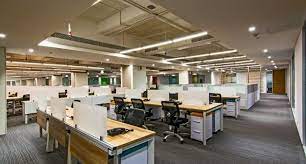In the bustling world of business, the conference table stands as a symbol of collaboration, innovation, and decision-making. From the boardroom to the coworking space, these tables have evolved significantly over time, mirroring the shifts in workplace culture and technology. Today, the conference table is more than just a piece of furniture; it’s a focal point for communication and productivity in modern workspaces.
Historically, conference tables have roots that stretch back centuries. In the medieval period, councils and gatherings were often held around large wooden tables where leaders discussed matters of state. Fast forward to the industrial revolution, and conference tables became fixtures in corporate settings, providing a space for executives and managers to convene and strategize.
However, it wasn’t until the mid-20th century that the conference table truly began to take on its modern form. With the rise of office culture and the advent of modernist design principles, tables became sleeker, more functional, and adaptable to various meeting formats. The iconic oval-shaped table, popularized by mid-century modern designers like Eero Saarinen, became a staple in boardrooms around the world, symbolizing progress and forward-thinking.
In the digital age, the conference table has undergone another transformation. With the proliferation of technology, tables are now equipped with built-in power outlets, USB ports, and connectivity options, allowing for seamless integration with laptops, tablets, and other devices. This integration of technology has revolutionized the way meetings are conducted, enabling remote participation and real-time collaboration regardless of physical location.
Moreover, the concept of the conference table has expanded beyond the traditional boardroom. In today’s agile work environments, tables are found in open-plan offices, coworking spaces, and even coffee shops. These communal tables serve as hubs for impromptu meetings, brainstorming sessions, and casual encounters, fostering a sense of community and camaraderie among coworkers.
One of the key benefits of conference tables lies in their ability to facilitate communication and collaboration. By bringing people together in a shared space, tables encourage dialogue, idea-sharing, and problem-solving. Whether it’s a formal presentation or a casual discussion, the conference table provides a neutral ground where diverse perspectives can be heard and valued.
Furthermore, the design of conference tables plays a crucial role in shaping the dynamics of meetings. Round tables, for instance, promote equality and inclusivity by eliminating hierarchical seating arrangements and encouraging face-to-face interaction. Rectangular tables, on the other hand, are well-suited for presentations and discussions involving larger groups, offering ample space for documents and multimedia displays.
Beyond their functional role, conference tables also make a statement about organizational culture and values. A modern, well-designed table can convey professionalism, creativity, and a commitment to collaboration, enhancing the overall image of the company. Likewise, investing in high-quality materials and craftsmanship demonstrates a dedication to excellence and attention to detail.
As the workplace continues to evolve, so too will the conference table. Future innovations may include augmented reality interfaces, wireless charging capabilities, and customizable configurations tailored to the specific needs of different teams and industries. However, no matter how advanced technology becomes, the fundamental purpose of the conference table – to bring people together and facilitate meaningful interactions – will remain unchanged.
In conclusion, the conference table is a versatile and essential piece of furniture in modern workspaces. From its humble origins in medieval councils to its present-day role as a hub for collaboration and innovation, the conference table has adapted to meet the evolving needs of businesses and organizations. By fostering communication, encouraging teamwork, and embodying the values of the company, conference tables play a vital role in shaping the culture and success of today’s workplaces.









